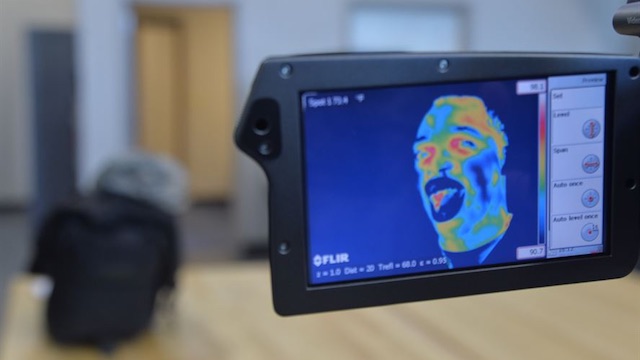
Engineers from the UCLA Samueli School of Engineering have designed a new type of photodetector. Using graphene, engineers have created a device capable of working with more types of light than any of its state-of-the-arty counterparts. Scientists believe there are numerous versatile applications for this new technology.
Fundamentally, photodetectors are light cameras. In many devices, they operate by sensing patterns of photons, an elementary particle. The photodetector uses the photons to create images from the patterns. Photodetectors can be designed to pick up specific parts of the light spectrum. Some are used to identify thermal radiation; others detect various types of chemicals based on how they reflect light.
Photodetectors are based on three important factors: operating speed, size of the spectrum they can sense, and sensitivity to lower light levels. In the past, improving one area has resulted in a dramatic reduction in at least one if not both of the other two areas. The new photodetector changes all that. It has major improvements in all three areas, making it a rarity among such devices. It operates across a wide range of light, is extremely sensitive to low light levels, and processes images much more quickly.
“Our photodetector could extend the scope and potential uses of photodetectors in imaging and sensing systems. It could dramatically improve thermal imaging in night vision or in medical diagnosis applications where subtle differences in temperatures can give doctors a lot of information on their patients. It could also be used in environmental sensing technologies to more accurately identify the concentration of pollutants.”
The new design relies heavily on graphene in order to work so effectively. Made out of a single layer of carbon atoms, graphene is super-thin and super-effective at detecting photons. That is because it absorbs energy gathered from a wide variety electromagnetic lights, including microwave bands, infrared, and ultraviolet. Graphene excels as an electrical current conductor, as it allows electron to easily flow through it.
The photodetector was built by laying strips of graphene over a layer of silicon dioxide. The silicon dioxide layer covers a base of silicon. Using gold, engineers then created a series of nanoscale comb-like patterns about 100 nanometers wide. The graphene operates like a net, catching photons and turning them into an electrical signal. From there, the gold nanopatterns transfer the signal into a processor. The processor then translates the signal into a high-quality corresponding image.
